Though we travel the world over to find the beautiful, we must carry it with us, or we find it not - Ralph Waldo Emerson
7 April 2019, Keetmanshoop to Garas Quiver Park, 23km
Garas Quiver Park N$280
What an extraordinary day. Not so much for the journey, but the destination.
We left Keetmanshoop after drawing cash at an ATM for the third day in a row, and got onto the B1 for the first time, the main arterial that will take us through Windhoek and Tsumeb to the Angolan border. We have been frustrated drawing cash, some Namibian banks refusing to allow us to draw anywhere near the daily limit authorised by our South African bank. When we face several days on the road where credit cards are unlikely to be accepted, and need therefore to carry sufficient cash for our needs, it is annoying to be arbitrarily limited to a small amount. It is also expensive, as each draw costs a whack.
Today’s ride was to be a short one, mainly to break the 86km to Tses, the first town north of Keetmanshoop, into a manageable distance. 22km through quiet scenery on a quiet Sunday, but the B1 giving us a taste of what is to come. A narrow road with no shoulder, in OK nick though nowhere near as good as other tar roads travelled in this country, and slightly busier with slightly more impatient drivers than encountered previously.
Garas is a delight. Just 1km off the B1 on an 800ha farm is not only a quiver tree forest, with some 300 trees on a ridge of lava rock, the oldest tree aged 500 years, but a quirky site decorated with wonderfully eccentric art works. Figures of wood dressed in an assortment of clothing, sitting in bathtubs or on bicycles or an ox-wagon. The park was begun 25 years ago by Marian Hulme’s late father, taken over by her mother, and for the last ten years, run by Marian herself. The art installations were begun by Marian’s dad and have become a family tradition. One figure,sitting still outside a tribal hut, she made with her dad when she was just 12.
Although we were the only people to spend the night, sharing the stars with Jonas who works for the family, an old mutt and new husky pup and a couple of cats, we were pleased to see that Marian’s Sunday was relatively busy. Some picnickers, some tour groups, and two busloads off Rovos rail, which began its trip in Johannesburg and would be ending it in Walvis Bay. Marian met them at the station, took them through the museum in the old Keetmanshoop church, and brought them out to Garas to stroll midst the quiver trees. Later, as we were beginning to prepare our barbecue of chops and sausage with salad and sweet Herero bread, we heard the Rovos passing by out of sight on its way to Windhoek.
Quiver tree facts: The Quiver Tree or Kokerboom is indigenous to the hot and dry southern part of Namibia. The plants are succulents and can reach a height of up to 9 m. They have adapted to the extreme environmental conditions by storing water in their trunks. The tree only blossoms for the first time after 20 to 30 years and can reach 300 years of age. The wood is very light and spongy inside, and because the trunk and branches can be easily hollowed out, they were used as quivers by the bushmen who formerly inhabited this area. https://www.afristay.com/p/21370?guests=1&rooms=None
For today's route see below photos
For overview route, click on ROUTE tab above…
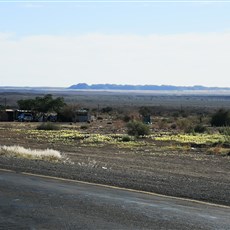
Keetmanshoop to Garas

Garas Quiver Farm
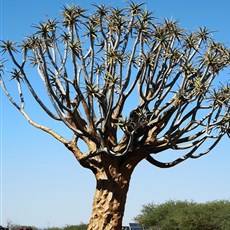
Garas Quiver Farm
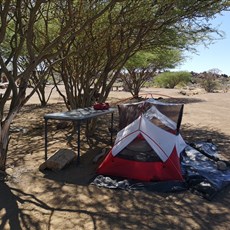
Garas Quiver Farm
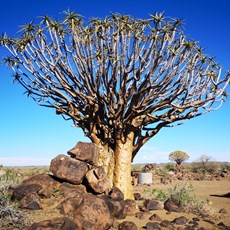
Garas Quiver Farm
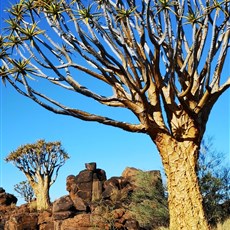
Garas Quiver Farm
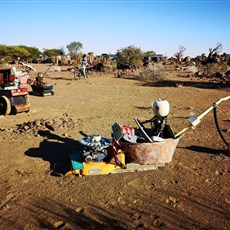
Garas Quiver Farm
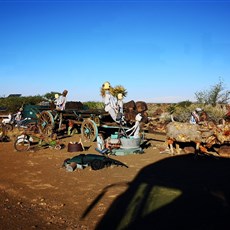
Garas Quiver Farm
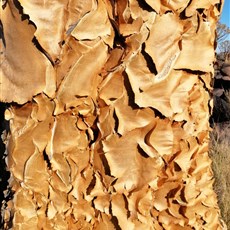
Garas Quiver Farm
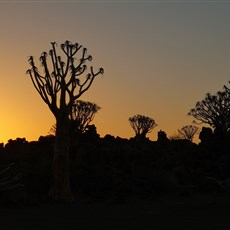
Garas Quiver Farm
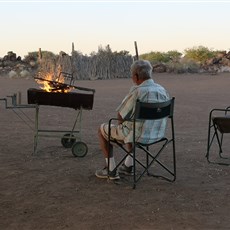
Garas Quiver Farm